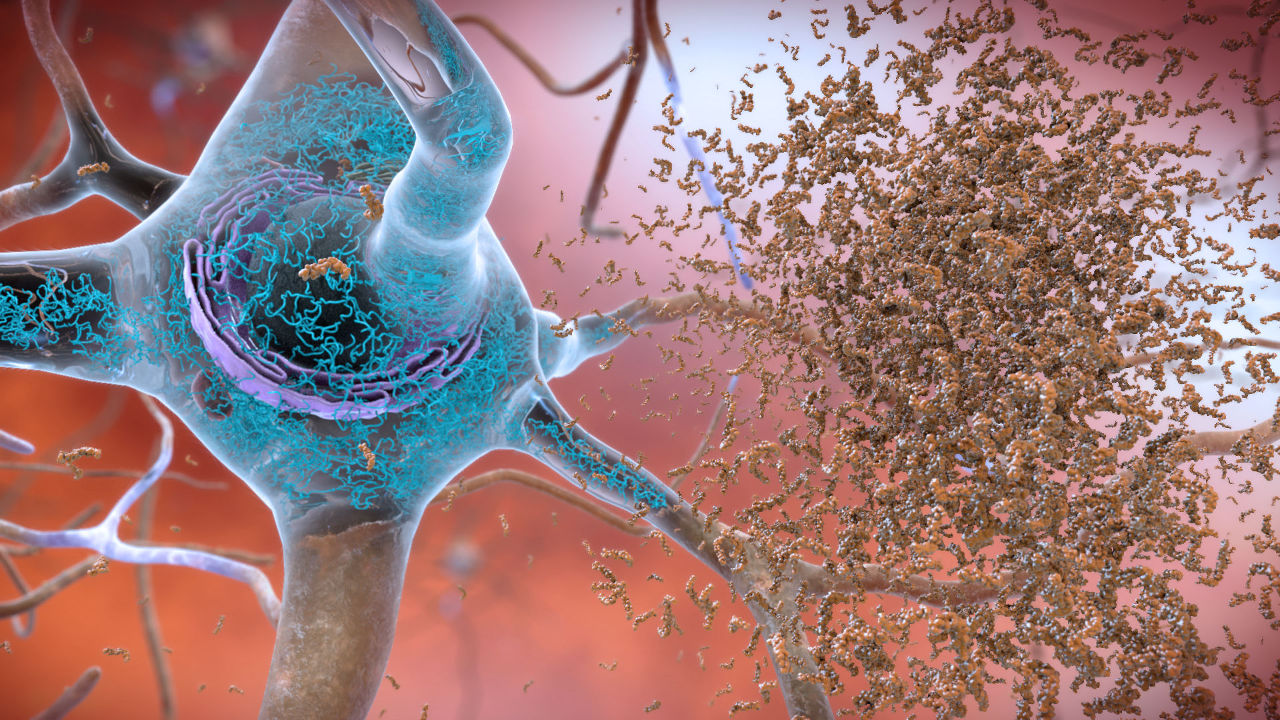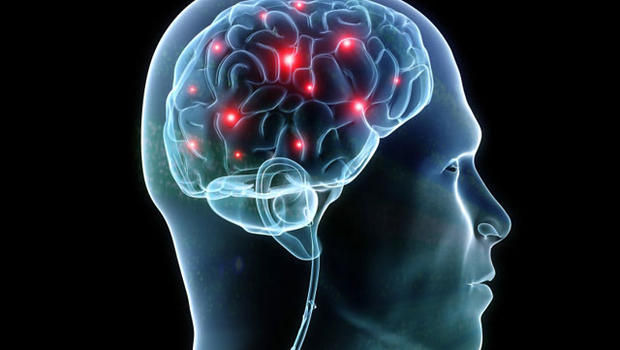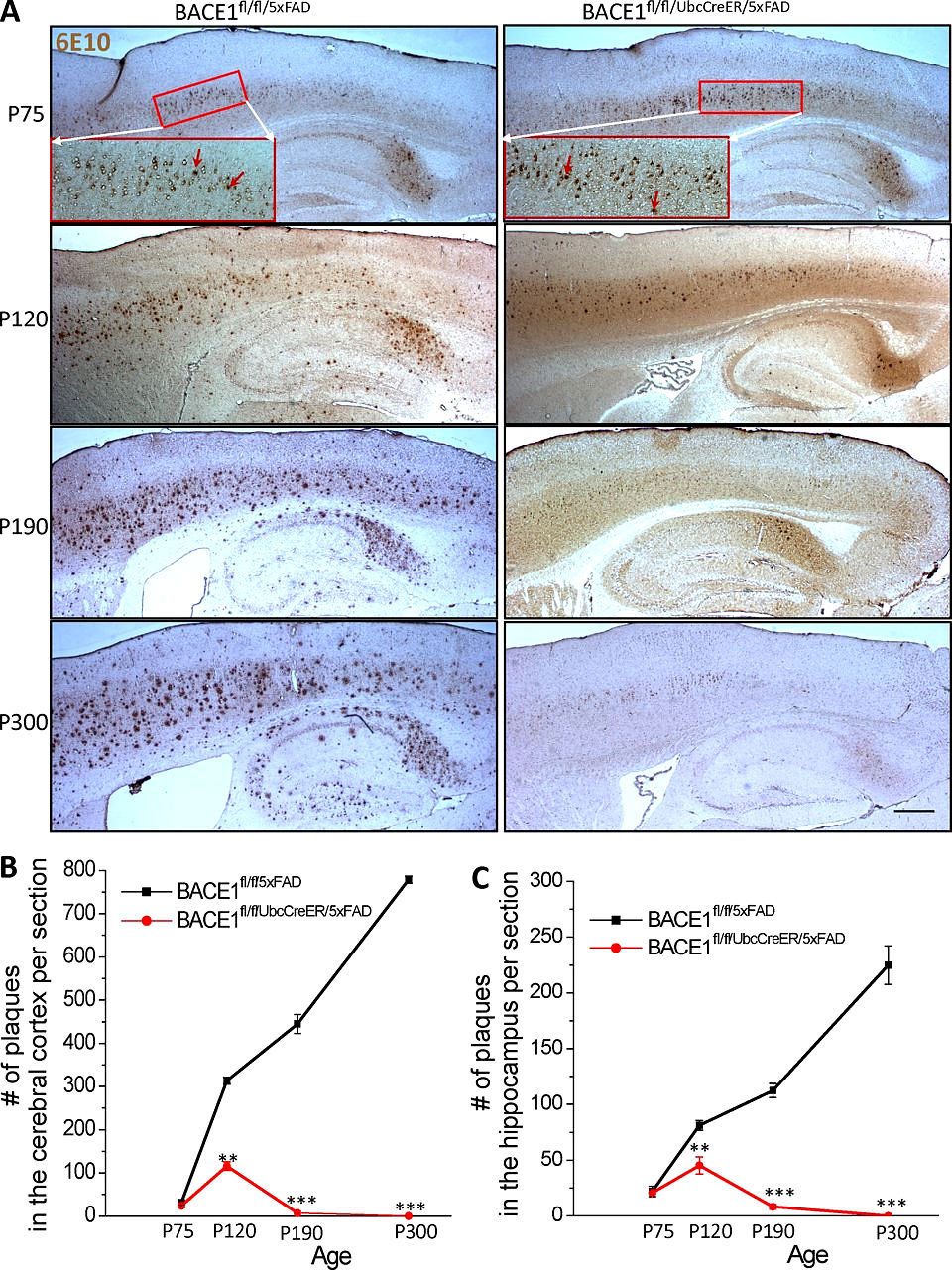Alzheimer’s Disease Successfully Reversed in Mice. Could Humans Be Next?
by Evelyn Reid
Originally published on Where’s Your Head?
February 14, 2018
Alzheimer’s disease has been successfully reversed in mice according to a landmark study conducted by neuroscientists at the Lerner Research Institute in Cleveland, Ohio.
”To our knowledge, this is the first observation of such a dramatic reversal of amyloid deposition in any study of Alzheimer’s disease mouse models,” says the report appearing in the Journal of Experimental Medicine February 14, 2018 [1].
Read Also: Want a Better Memory? Try This Exercise
And: Sleep Aids That Work: What Science Says


”To our knowledge, this is the first observation of such a dramatic reversal of amyloid deposition in any study of Alzheimer’s disease mouse models.”
(Photos from top left going clockwise: illustration of amyloid plaque buildup interfering with a healthy neuron courtesy of the National Institute on Aging, top right brain image courtesy of www.modup.net/, bottom left photo features brain scans showing amyloid plaque buildup appearing by Day 75 in mice genetically programmed with Alzheimer’s (left) and mice programmed with both Alzheimer’s and BACE1 levels that drop with age (right). Note how the plaques dissapear completely by Day 300 in the latter.)

Long story short, Alzheimer’s disease is believed to be largely driven by the overproduction of beta-amyloid peptides which in turn can lead to the formation of amyloid plaques in the brain, sticky buildups of protein fragments toxic to neurons.
BACE1, aka beta-secretase, is a protein enzyme that breaks down amyloid precursor proteins into these problematic beta-amyloid peptides.
Incidentally, study researcher Riqiang Yan was part of one of four research teams in 1999 who simultaneously discovered the existence of this enzyme in the first place. BACE1, at optimal levels, appears to regulate proper communication between neurons in the brain [2]. Too little can lead to a host of neurological problems, notably depression, hyperactivity, reduced neurogenesis, and epileptic seizures [3].

As for too much BACE1? An overabundance in the brain may very well encourage Alzheimer’s disease.
To quote Yan, ”although the etiological factors that cause Alzheimer’s disease remain undefined, genetic studies suggest that excessive production of beta-amyloid peptides, the major component of senile plaques, promotes the onset of Alzheimer’s Disease.”
Alzheimer’s Disease Reversal: Drop BACE1?
With that in mind, Yan and team bred mice who started developing amyloid plaques in their brains at 75 days of age with mice they genetically programmed to gradually lose BACE1 as they aged. The problem with removing the BACE1 gene altogether is it stunts early neurodevelopment, hence the interest in seeing what happens if its production is gradually tapered off in adulthood instead. The good news is mice who were programmed to drop BACE1 gradually as they aged showed healthy development.
Meanwhile, offspring bred to inherit both a predisposition to Alzheimer’s disease and a gradual BACE1 drop with age developed, as predicted, amyloid plaques at around 75 days of age while gradually losing BACE1 over time. Remarkably, as those BACE1 levels continued to drop with age, the plaques started to reverse, completely disappearing by the time they were 300 days old, igniting hope that the cure to Alzheimer’s disease may be within reach.
Alzheimer’s Disease Reversed in Humans: The Next Step?
Creating a drug that targets BACE1 levels in humans afflicted with “one of the most serious health problems in the industrialized world” [4] has been a major goal among Alzheimer’s disease researchers over the last decade [5], though given how murky the scientific community’s understanding is of BACE1’s role in the body—apart from its clearly critical role in the brain, an abundance of the enzyme in located in, of all places, the pancreas [6]—more research beyond removing plaques in mice is needed to safely and effectively reverse Alzheimer’s disease in humans. Nonetheless, it’s clinical results like these that make medical history.
Read Also: Want a Better Memory? Try This Exercise
Where’s Your Head? Sign up for Our Free Newsletter

References
- Hu X, Das B, Hou H, He W, Yan R. BACE1 deletion in the adult mouse reverses preformed amyloid deposition and improves cognitive functions. Journal of Experimental Medicine Feb 2018, jem.20171831.
- Vassar R, Kuhn PH, Haass C, Kennedy ME, Rajendran L, Wong PC, Lichtenthaler SF. Function, therapeutic potential and cell biology of BACE proteases: current status and future prospects. Journal of Neurochemistry 2014; 130: 4-28.
- Hu X, Zhou X, He W, et al. BACE1 deficiency causes altered neuronal activity and neurodegeneration. The Journal of neuroscience: The official journal of the Society for Neuroscience 2010; 30(26): 8819-8829.
- Bertram L, Tanzi RE. The genetic epidemiology of neurodegenerative disease. Journal of Clinical Investigation 2005 Jun 1; 115(6): 1449–1457.
- Kennedy ME, Stmaford AW, Chen X, et. al. The BACE1 inhibitor verubecestat (MK-8931) reduces CNS β-amyloid in animal models and in Alzheimer’s disease patients. Science Translational Medicine 02 Nov 2016: 8(363): 363ra150.
- Hoffmeister A, Dietz G, Zeitschel U, Mössner J, Rossner S, Stahl T. BACE1 is a newly discovered protein secreted by the pancreas which cleaves enteropeptidase in vitro. Journal of the Pancreas 2009 Sep 4; 10(5):501-6.
Alzheimer’s Disease Successfully Reversed in Mice. Could Humans Be Next?
by Evelyn Reid
Originally published on Where’s Your Head?
February 14, 2018

Alzheimer’s disease has been successfully reversed in mice according to a landmark study conducted by neuroscientists at the Lerner Research Institute in Cleveland, Ohio.
”To our knowledge, this is the first observation of such a dramatic reversal of amyloid deposition in any study of Alzheimer’s disease mouse models,” says the report appearing in the Journal of Experimental Medicine February 14, 2018 [1].
Read Also: Want a Better Memory? Try This Exercise
And: Sleep Aids That Work: What Science Says

Long story short, Alzheimer’s disease is believed to be largely driven by the overproduction of beta-amyloid peptides which in turn can lead to the formation of amyloid plaques in the brain, sticky buildups of protein fragments toxic to neurons.
BACE1, aka beta-secretase, is a protein enzyme that breaks down amyloid precursor proteins into these problematic beta-amyloid peptides.
Incidentally, study researcher Riqiang Yan was part of one of four research teams in 1999 who simultaneously discovered the existence of this enzyme in the first place. BACE1, at optimal levels, appears to regulate proper communication between neurons in the brain [2]. Too little can lead to a host of neurological problems, notably depression, hyperactivity, reduced neurogenesis, and epileptic seizures [3].

Above: an illustration of amyloid plaque buildup interfering with a healthy neuron courtesy of the National Institute on Aging.
”To our knowledge, this is the first observation of such a dramatic reversal of amyloid deposition in any study of Alzheimer’s disease mouse models.”

Above: brain scans showing amyloid plaque buildup appearing by Day 75 in mice genetically programmed with Alzheimer’s (left) and mice programmed with both Alzheimer’s and BACE1 levels that drop with age (right). Note how the plaques dissapear completely by Day 300 in the latter.
As for too much BACE1? An overabundance in the brain may very well encourage Alzheimer’s disease.
To quote Yan, ”although the etiological factors that cause Alzheimer’s disease remain undefined, genetic studies suggest that excessive production of beta-amyloid peptides, the major component of senile plaques, promotes the onset of Alzheimer’s Disease.”
Alzheimer’s Disease Reversal: Drop BACE1?
With that in mind, Yan and team bred mice who started developing amyloid plaques in their brains at 75 days of age with mice they genetically programmed to gradually lose BACE1 as they aged. The problem with removing the BACE1 gene altogether is it stunts early neurodevelopment, hence the interest in seeing what happens if its production is gradually tapered off in adulthood instead. The good news is mice who were programmed to drop BACE1 gradually as they aged showed healthy development.
Meanwhile, offspring bred to inherit both a predisposition to Alzheimer’s disease and a gradual BACE1 drop with age developed, as predicted, amyloid plaques at around 75 days of age while gradually losing BACE1 over time. Remarkably, as those BACE1 levels continued to drop with age, the plaques started to reverse, completely disappearing by the time they were 300 days old, igniting hope that the cure to Alzheimer’s disease may be within reach.
Alzheimer’s Disease Reversed in Humans: The Next Step?
Creating a drug that targets BACE1 levels in humans afflicted with “one of the most serious health problems in the industrialized world” [4] has been a major goal among Alzheimer’s disease researchers over the last decade [5], though given how murky the scientific community’s understanding is of BACE1’s role in the body—apart from its clearly critical role in the brain, an abundance of the enzyme in located in, of all places, the pancreas [6]—more research beyond removing plaques in mice is needed to safely and effectively reverse Alzheimer’s disease in humans. Nonetheless, it’s clinical results like these that make medical history.
Read Also: Want a Better Memory? Try This Exercise
Where’s Your Head? Sign up for Our Free Newsletter

References
- Hu X, Das B, Hou H, He W, Yan R. BACE1 deletion in the adult mouse reverses preformed amyloid deposition and improves cognitive functions. Journal of Experimental Medicine Feb 2018, jem.20171831.
- Vassar R, Kuhn PH, Haass C, Kennedy ME, Rajendran L, Wong PC, Lichtenthaler SF. Function, therapeutic potential and cell biology of BACE proteases: current status and future prospects. Journal of Neurochemistry 2014; 130: 4-28.
- Hu X, Zhou X, He W, et al. BACE1 deficiency causes altered neuronal activity and neurodegeneration. The Journal of neuroscience: The official journal of the Society for Neuroscience 2010; 30(26): 8819-8829.
- Bertram L, Tanzi RE. The genetic epidemiology of neurodegenerative disease. Journal of Clinical Investigation 2005 Jun 1; 115(6): 1449–1457.
- Kennedy ME, Stmaford AW, Chen X, et. al. The BACE1 inhibitor verubecestat (MK-8931) reduces CNS β-amyloid in animal models and in Alzheimer’s disease patients. Science Translational Medicine 02 Nov 2016: 8(363): 363ra150.
- Hoffmeister A, Dietz G, Zeitschel U, Mössner J, Rossner S, Stahl T. BACE1 is a newly discovered protein secreted by the pancreas which cleaves enteropeptidase in vitro. Journal of the Pancreas 2009 Sep 4; 10(5):501-6.




